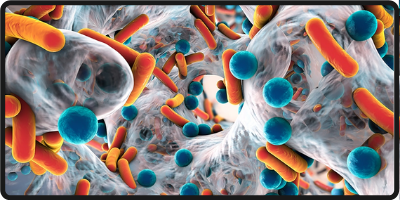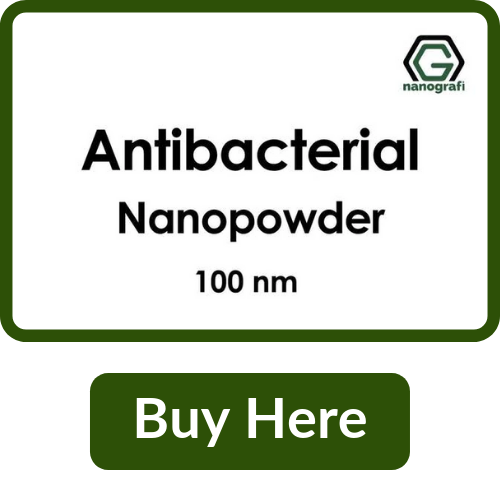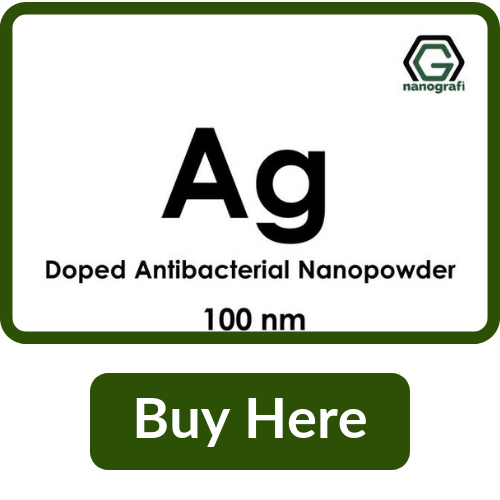Antibacterial Nanopowder: Types, Content, Price, Uses
The development of Antibacterial Nanopowder has been approached by different areas of science as a possible solution to a wide variety of pathologies (meningitis, encephalitis, bacteremia and febrile gastroenteritis) associated with bacterial colonization on surfaces of medical devices, hospital garments and even at the level of infrastructure. Although human mortality from nosocomial infections has decreased over the last century, this is a public health problem that requires more attention. The prevention of infections through Antibacterial Nanopowder to limit or inhibit the growth of microorganisms is very important. This article seeks to demonstrate the importance of Antibacterial Nanopowder in different sectors.
Disclaimer: The content of this post or any other linked material is intended for informational purposes only and should not be taken as medical advice.
Antibacterial Nanopowder
The Antibacterial Nanopowder being offered by Nanografi is around 100 nm in size and is composed of very important elements having antibacterial properties. The elements include Phosphorus pentoxide, Zirconium dioxide, Nitrous Oxide, Yttrium oxide, Aluminium dioxide, Titanium dioxide, and Hafnium Dioxide. This Antibacterial Nanopowder is 98% white in color and contains silver up to 3.45% because of its antibacterial property. The pH of the Antibacterial Nanopowder ranges between 5.5 and 6.0 whereas the bulk density is 0.53 gram per milliliter. The Antibacterial Nanopowder costs only €7 per 5 grams and the cost decreases with the increase in the quantity of the Antibacterial Nanopowder.
This Antibacterial Nanopowder generates a bactericidal or bacteriostatic effect in pathogenic microorganisms, guaranteeing their decrease or elimination. In this sense, nanotechnology presents a wide spectrum of new possibilities, offering techniques that allow the synthesis of materials with antimicrobial activity. This area is decisive since the performance of the nanoparticles is only related to the methods of synthesis. After the modification of the parameters during the said process, it is possible to modify the properties of the material obtained. Even in the literature, it has been detailed that the effectiveness of Antibacterial Nanopowder depends on the size of the particles. As already mentioned, this Antibacterial Nanopowder product is only 100 nm in size. Within the inorganic antibacterial nanopowder, titanium dioxide has gained special attention, thanks to its wide range of properties, especially for its photocatalytic property which is used to kill bacteria such as E. coli.
Characteristics of Antibacterial Nanopowder
Antibacterial Nanopowder has the ability to reduce or eliminate pathogenic microorganisms and its action can be measured by two mechanisms; in the first, the material generates a metabolic lesion in the pathogens that is reversible after its elimination or neutralization, this effect is known as a bacteriostatic effect; whereas the second mechanism is irreversible since it affects vital cellular structures or their function and is known as a bactericidal effect.
How Antibacterial Nanopowder Works
First, the contact reaction takes place. The metal ions in the antibacterial nanopowder react with the bacteria, causing damage to the intrinsic components of the microorganism or causing dysfunction. When a quantity of traces of metal ions reaches the microbial cell membrane, the latter is negatively charged and relies on the Coulomb attraction to make the two strongly adsorbed. Metal ions penetrate the cell wall and react with the sulfhydryl group to coagulate and destroy the protein.
The activity of the cell synthetase loses its ability to reproduce and eventually die. Antibacterial nanopowder can also destroy microbial electron transport systems, respiratory systems, and mass transfer systems. when the cells lose their activity, the metal ions are released by the cells and the bactericidal activity is repeated so that the antibacterial effect lasts a long time.
In the second phase, the photocatalytic reaction takes place. Under the action of light, metal ions can act as catalytic active centers, activate oxygen in water and air, generate hydroxyl radicals and reactive oxygen ions and active oxygen ions having a strong oxidizing power. They destroy the reproductive capacity of the bacteria in a short time and cause the death of the cells, thus achieving the purpose of antibacterial nanopowder.
Types of Antibacterial Nanopowder
The Antibacterial Nanopowder usually used, in terms of chemical composition, can be classified into two large families; organic Antibacterial Nanopowder and inorganic Antibacterial Nanopowder. The former can be extracted or otherwise collected as a product of the secretion of numerous living organisms (microorganisms, plants, insects, fish and amphibians or mammals) which are mostly produced as a result of defense mechanism against the invasion of microorganisms. These exert their activity of permeabilization of the cell membranes of bacteria through the formation of pores or structural defects.
Compared to conventional antibacterial products, organic antibacterial nanopowder offer the advantage of acting at very low concentrations, between 1 and 4 mg/mL, in addition to having a broad-spectrum antibacterial activity. Examples of these types of materials are gramicidin and turmeric, widely used as antibacterial agents. On the other hand, the inorganic antibacterial nanopowder includes metals and metal oxides and have been the most reported in the literature due to the advantages they present such as high stability and biosecurity.
Elements of Antibacterial Nanopowder
The elements of inorganic antibacterial nanopowder being offered by Nanografi such as silver, titanium dioxide, and copper have attracted special attention due to their high stability when in contact with biological systems.
1. Silver Nanoparticles
Silver is the most studied antibacterial agent and therefore a lot of information is available regarding its mechanism of antimicrobial activity, it is active against Gram-negative (Escherichia coli) and Gram-positive (Staphylococcus, aureas) bacteria and although there is great controversy over its mechanism of action, these could be summarized in three main ones; the first would be explained by the gradual release of silver ions that inhibit the production of adenosine triphosphate (ATP) and DNA replication, fundamental factors for cell survival; The second mechanism could be attributed to the ability of nanoparticles to generate direct damage to the cell membrane and the third by the generation of reactive oxygen species that generate oxidative stress and subsequent cell death.
Recent studies have tried to understand the mechanism of action of silver nanoparticles and have sought to optimize their synthesis. In that sense, N. Jaya Prakash proposed in their study "Antibacterial Activity of Silver Nanoparticles Synthesized from Serine" the synthesis of silver nanoparticles by microwave irradiation using serine as a reducer and polyvinylpyrrolidone (PVP) as a coating agent in an aqueous medium, demonstrating that this method provides advantages such as greater profitability, formation of highly stable nanoparticles, direct and scalable and shorter reaction time.
2. Phosphorus pentoxide
As for Phosphorus pentoxide, it exposes a broad spectrum of biocidal activity towards different bacteria, fungi, and viruses. The compound has greater absorption capacity due to which it has been incorporated in the antibacterial Nanopowder.
3. Zirconium dioxide
Several studies indicate that Zirconium dioxide act as an antibacterial agent on the isolates. It is very good at working as an antibiotic against particular bacteria such as Staphylococcus epidermis and Staphylococcus aureus. Its combination with other inorganic antibacterial components increases its efficiency.
4. Nitrous Oxide
Nitrous Oxide has proved to be very effective against pathogens. It gets involved with immune cells which helps to fight against fungi, bacteria, parasites, and viruses.
5. Yttrium oxide
Yttrium oxide has the capability to damage the bacterial cell membrane and enter cells to alter its enzymatic function leading to the death of the bacteria. In the nanosize form, they are very effective against bacteria and fungi.
6. Aluminum oxide
Aluminum oxide, as already known has great antibacterial power and this is because of its large surface area which promotes reactions with bio-organics on the surface of the cell.
7. Hafnium dioxide
Hafnium dioxide is also an important compound to treat and it is also very effective against different types of bacteria.
8. Titanium Dioxide
During the last decades, the use of TiO2 nanomaterials has been a strong research area, showing that its applications can be categorized into four types according to the properties of the material. Its optical properties, for example, allow it to be a good candidate for UV protection, while its photocatalytic property makes it a promising material for the decomposition of environmental pollutants such as methanethiol (CH3SH) a colorless gas similar to rotten cabbage released from municipal wastewater and solids. TiO2 is also usually used to kill bacteria such as E. coli and tumor cells in cancer. On the other hand, the electrical properties give it the characteristics of super hydrophilicity or superhydrophobicity, so it can be used for self-cleaning or anti-fogging materials.
Applications of Antibacterial Nanopowder
The antibacterial nanopowder is treated with high-tech nanotechnology, so that it has a broader and superior antibacterial and bactericidal function, and the long-term antibacterial effect is improved by prolonged release.
Antibacterial nanopowder is widely used in air purification, wastewater treatment, plastic products, architectural coatings, and other fields nowadays.
Since the atomic disposition of nanomaterials is represented by a "metamorphism" between solids and molecules, this highly active antibacterial nanoparticle has a superior antibacterial capacity and has a unique surface interface due to the size of the nanoparticles. The effect is antibacterial: the number of nanoparticles surface atoms is much higher than that of the conventional particle surface due to the lack of adjacent coordination atoms, which improves the affinity of the antibacterial nanopowder and also the antibacterial efficiency. Antibacterial nanopowder does not cause pollution and the disinfection effect is safe and reliable.
1. Antibacterial Nanopowder in Air purification
Air pollutants mainly refer to nitrogen oxides and hydrosulfite from automobile exhausts and industrial exhaust gases. The photocatalytic action of nano-TiO2 can oxidize these gases into nitric acid and low vapor tension sulfuric acid, which are removed together with the rain process, thus achieving the purpose of reducing atmospheric pollution.
2. Antibacterial Nanopowder in Solid waste treatment
The application of nanotechnologies in the treatment of solid waste is mainly reflected in the following two aspects: firstly, the nanometer-scale treatment agent rapidly degrades solid waste. For example, nano-TiO2 degrades solid waste at a rate 10 times faster than conventional TiO2. Nanotechnology can greatly alleviate the enormous pressure that solid waste brings to the environment, and it can also reduce secondary dyeing caused by traditional methods such as a landfill.
3. Antibacterial Nanopowder in Radiation protection
The antibacterial nanopowder has strong dispersion and absorption capacity of ultraviolet light. Nano-TiO2 has a strong absorption capacity especially for ultraviolet rays harmful to medium-long waves, and its effect is stronger than organic ultraviolet ray absorber. Antibacterial nanopowder has a strong ability to absorb ultraviolet light and has a shielding effect on UV rays.
4. Treatment of inorganic pollutants in wastewater
The photocatalytic treatment of inorganic wastewater is the most studied in the treatment of wastewater containing chromium and cyanide. Under different reaction conditions, the effect of antibacterial nanopowder on the reduction of chromium in aqueous solution is different and very effective.

A recent Cyanide leak in Indiana have resulted in the death of 3,000 fish and shut down of the beaches as they present a health hazard to the residents. Source: Time.com
To recapitulate, the antibacterial nanopowder is full of benefits in different applications. This is because the materials that it contains in the nanosize have exceptional antibacterial properties. The antibacterial Nanopowder is 100 nm in size and it contains elements such as Silver, Phosphorus pentoxide, Zirconium dioxide, Nitrous Oxide, Yttrium oxide, Aluminium oxide, Hafnium dioxide. This antibacterial Nanopowder can be used for antibacterial disinfection, ultraviolet shielding, solid waste treatment, wastewater treatment, etc.
Recent Posts
-
Advanced Materials for Unmanned Aerial Vehicle (UAV) Protection Against Laser
Consider a UAV on a critical mission, rendered inoperative by a sudden laser attack. With the increa …26th Jul 2024 -
Simulation and Modeling of Material Properties
Our world is composed of a dazzling array of materials, each with its own unique properties that dic …19th Jul 2024 -
Advanced Coatings for Superior Corrosion and Wear Resistance
Corrosion and wear pose significant challenges across various industries, leading to substantial eco …12th Jul 2024






